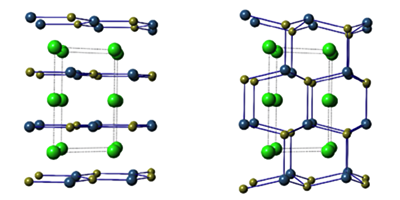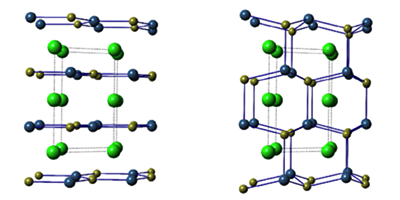Finding Ferroelectrics
Ferroelectrics exhibit a spontaneous electric polarization that can be reversed by an applied electric field, in the same way that a ferromagnet’s spontaneous magnetic moment can be reversed by a magnetic field. In pursuit of new materials with better properties than those currently available, Joseph Bennett at Rutgers University, New Jersey, and colleagues have investigated a class of materials that they predict will be ferroelectric.
Any insulating material with a polar structure can, in principle, be ferroelectric if the energy barrier for switching electric polarization is low enough. Following this idea, the team decided to study compounds of the structure type—a hexagonal structure that is “stuffed” with a cation lying between atomic planes. This structure is polar due to buckling of the planes, with atomic composition and the size of the “stuffing” ion controlling the degree of buckling and the energy barrier to switching electric polarization.
Most compounds having the structure belong to one of six common types, comprising combinations of elements from different atomic groups of the periodic table. Bennett et al. analyzed existing non-rare-earth compounds and hypothetical compounds that have never been synthesized. Through first-principles calculations, they showed that eight of the candidates have polarizations and barriers to switching comparable to or better than the paradigm ferroelectrics barium titanate ( ) and lead titanate ( ). Out of these eight candidates, six have previously been synthesized, and the other two, while so far hypothetical, could possibly be obtained in metastable phases. These results suggest the possibility of expanding the list of known ferroelectrics. – Daniel Ucko





